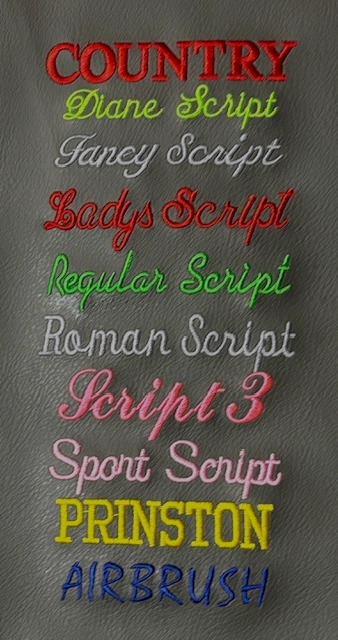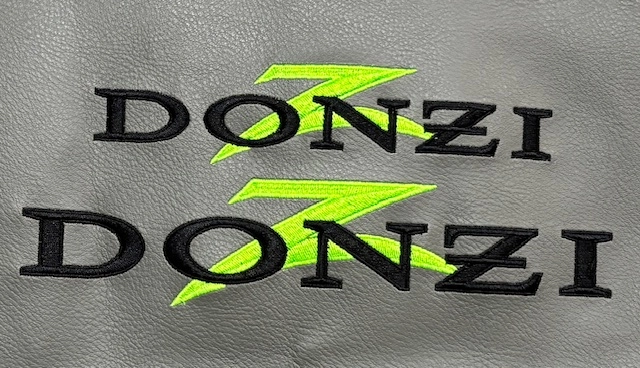The Art of Customized Embroidery: Opening the Keys to Creating Unique and Unforgettable Styles
The tricks to developing personalized embroidery designs that captivate the eye and leave a long lasting perception lie in a fragile equilibrium of strategy, creativity, and interest to information. As we dive right into the world of custom-made needlework, we uncover the nuanced interplay in between thread choice, sew complexity, and design customization that boosts a mere garment to a work of art.
Choosing the Right Embroidery Threads
When selecting needlework threads, what crucial factors should you think about to ensure the most effective outcomes for your custom layouts? The choice of embroidery thread is crucial in figuring out the last outcome of your embroidered layout. Among the key factors to consider is the material of the thread. Different materials such as cotton, polyester, rayon, and silk provide differing degrees of shine, sturdiness, and structure. It is necessary to choose a thread product that enhances the fabric you are stitching on and aligns with the desired look of the style.
Thicker strings can add dimension and texture to your design, while finer threads are ideal for detailed information and little message. Additionally, thinking about the shade fastness and washability of the string is vital to make sure that your custom-made layouts preserve their quality and vibrancy over time.
Exploring Various Stitch Methods
To dive into the world of 'Checking out Different Stitch Techniques', one should realize the complexities and subtleties that each stitching technique brings to the art of needlework. Various stitch strategies not only add aesthetic rate of interest but likewise contribute to the general texture and dimension of the layout. One prominent stitch technique is the satin stitch, which entails very closely stuffed parallel stitches to produce a smooth and shiny surface, suitable for filling out shapes and developing vibrant lays out.
On the other hand, the backstitch is a functional strategy often made use of for laying out and adding great information. It involves sewing backward to produce a solid line of embroidery. In addition, the French knot stitch includes a responsive element to designs, excellent for developing distinctive accents like blossom centers or attractive touches.
Exploring different stitch strategies permits embroiderers to have fun with light, darkness, and deepness within their styles, boosting the visual appeal and artistic top quality of review their needlework projects. By grasping numerous sewing approaches, one can open endless possibilities for producing special and unforgettable custom-made embroidery pieces.
Incorporating Personalized Design Components
Having explored the details of different stitch methods such as the satin stitch, backstitch, and French knot, the focus now changes towards integrating individualized layout components in custom-made embroidery tasks. Personalized layout elements play an important role in making embroidery jobs absolutely unique and memorable.
One more means to integrate individualized design aspects is by consisting of signs or motifs that hold special meaning to the recipient or reflect their rate of interests and character. For instance, including a preferred flower, pet, or hobby-related symbol can make the needlework layout extra meaningful and personalized. Additionally, choosing shades that reverberate with the recipient or align with the intended motif can additionally improve the personalization of the needlework project.
Mastering the Art of Shade Control

One key element of shade control is understanding color theory. This includes recognizing how different shades engage with each various other, the feelings they convey, and exactly how they can be integrated to develop aesthetically attractive styles. By using shade concept principles, embroiderers can develop unified color palettes that boost the general look of the design.
In addition, taking note of comparison is crucial in shade sychronisation. Utilizing contrasting colors can aid particular components of the design pop, boost readability, and produce an aesthetically vibrant needlework piece. By grasping the art of color sychronisation, embroiderers can elevate their designs and create remarkable pieces that resonate with clients and viewers alike.
Enhancing Appearance With Advanced Embroidery Stitches

French knots, as an example, are perfect for adding little, elevated dots to your layout, resembling the look of grains or developing a distinctive surface area. Bullion knots, on the various other hand, can be made use of to create twisted, ropelike elements that add an extravagant feel to the needlework. Seed sewing entails small, scattered stitches that can complete areas with a speckled structure, while turkey job produces cosy, dimensional accents evocative animal hair or foliage. Exploring with these innovative needlework stitches allows you Read Full Report to push the boundaries of standard embroidery and create really distinct and aesthetically attractive structures in your styles.
Final Thought
To conclude, the art of customized needlework involves a mix of choosing the best strings, checking out different stitch methods, incorporating individualized design aspects, understanding shade control, and boosting texture with advanced stitches. By comprehending and applying these key components, embroiderers can produce one-of-a-kind and unforgettable styles that display their imagination and ability. Embroidery lovers can open the secrets to producing gorgeous and bespoke pieces that stand out and leave a lasting impact.